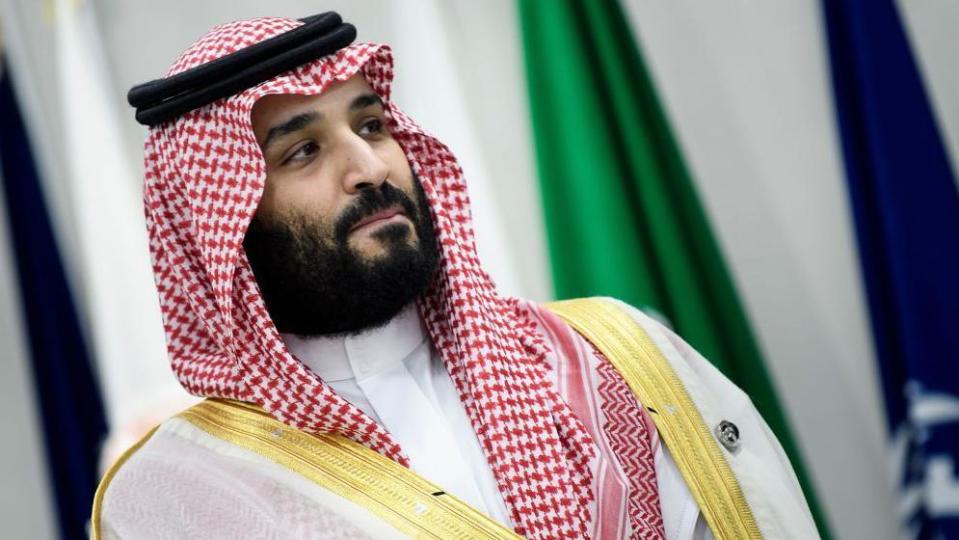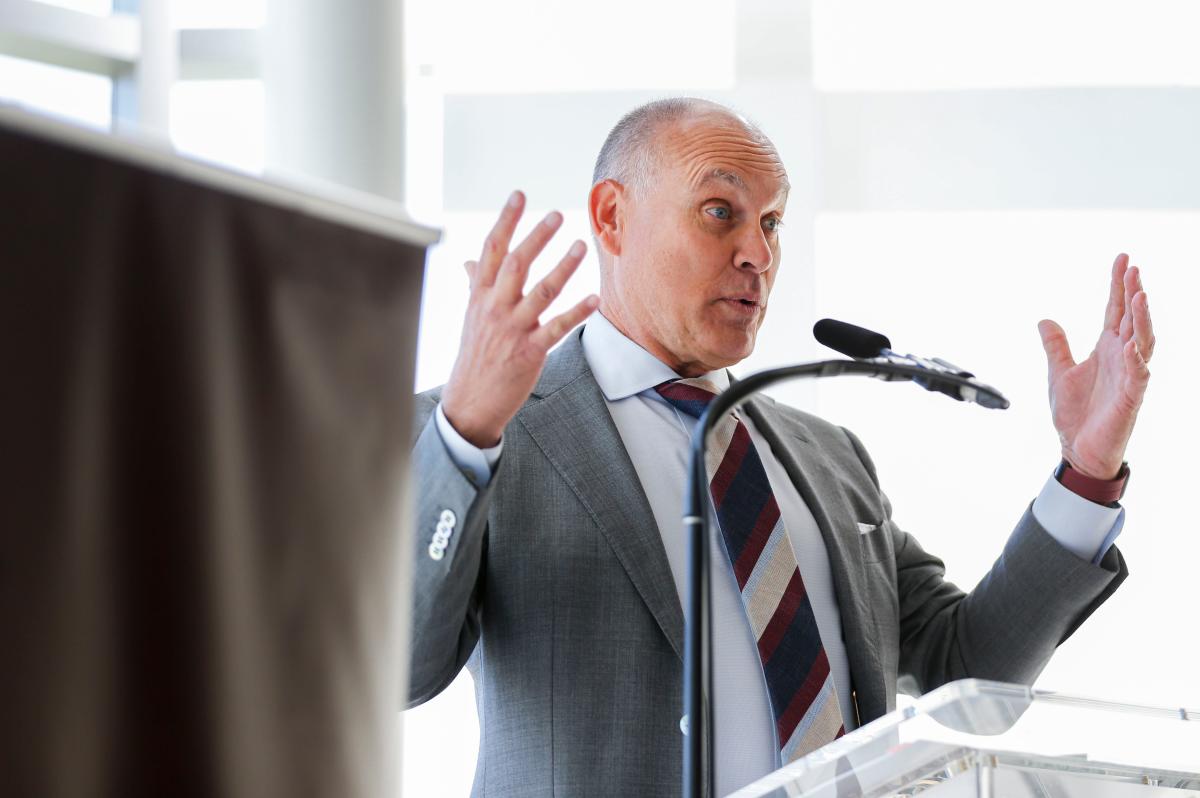“They can keep saying that, and we can keep proving them wrong.”
That was the response of Saudi Crown Prince Mohammed bin Salman in a TV documentary broadcast in July 2023, as he spoke about the skepticism surrounding Saudi Arabia’s major construction projects.
Nearly a year later, some doubts appear to be true.
In recent months, Saudi Arabia has apparently scaled back plans for its massive Neom desert development project, which is the centerpiece of Vision 2030.
This is the economic diversification program led by Prince Mohammed, the de facto ruler of the Gulf state, to shift the country’s economy away from dependence on oil.
In addition to Neom, Saudi Arabia is also developing thirteen other major construction plans, or ‘giga projects’ as they are called, worth trillions of dollars. These include an entertainment city on the outskirts of the capital Riyadh, several luxury island resorts on the Red Sea and a cluster of other tourist and cultural destinations.
But low oil prices have impacted government revenues, forcing Riyadh to reassess these projects and explore new financing strategies.
An adviser, who has ties to the government but did not want to be named, told the BBC that the projects were being assessed and a decision was expected soon.
“The decision will be based on several factors,” he said. “But there is no doubt that there will be a recalibration. Some projects will proceed as planned, but others may be delayed or scaled back.”
Announced in 2017, Neom is a $500 billion (£394 billion) plan to build ten futuristic cities in a desert region in the north-west of the country.
The most ambitious of them, and the one that has made all the headlines, is The Line. This will be a linear city consisting of two adjacent, parallel skyscraper walls that are 500 meters high – taller than the Empire State Building. Yet they will have a combined width of only 200 meters, including the space between them.

The original plan was for them to extend over 170 km (105 mi) and house nine million inhabitants.
But according to people familiar with the details – and as has already been leaked to the press – project developers will now focus on completing just 2.4 kilometers by 2030, as part of the first module.
When The Line was first announced, it was billed as a “carbon-free linear city” that would redefine urban living, with amenities for residents such as parks, waterfalls, flying taxis and robot girls.
The city would have no roads or cars and would be made up of interconnected, car-free communities. It would also include an ultra-high-speed train, with a maximum journey time of 20 minutes anywhere within the city limits.
It is unclear how many of these features will be part of the first phase.
Along with The Line, Neom will also include an octagonal floating industrial city and a mountain ski resort that will host the 2029 Asian Winter Games.
Ali Shihabi, a former banker who now sits on Neom’s advisory board, says the targets for projects under Vision 2030 are deliberately “designed to be overambitious.”
“It was intended to be overly ambitious, with the clear understanding that only part of it would be delivered on time. But even that part would be significant,” says Mr Shihabi.
The scaling back of Neom has put a spotlight on the financing problems facing the Saudi government.
Neom is funded by the Saudi government through its sovereign wealth entity, the Public Investment Fund (PIF).
The official cost of building Neom, $500 billion, is 50% more than the country’s entire federal budget for this year. But analysts estimate it would ultimately cost more than $2 trillion to implement the entire project.
Saudi Arabia’s government budget has been in deficit since late 2022, when the world’s largest oil exporter began cutting production to boost global prices. The government predicts a deficit of $21 billion this year.
The PIF feels the pressure. It manages assets worth about $900 billion, but had only $15 billion in cash reserves as of September.


Tim Callen, former head of the IMF in Saudi Arabia and now a visiting scholar at the Arab Gulf States Institute, says raising capital for Neom and other large-scale projects is a key challenge going forward.
“It will become increasingly difficult to fund the PIF at the level required for these projects,” Mr Callen said.
The Gulf state is using other avenues to strengthen capital.
Earlier this month, it sold about $11.2 billion worth of shares in its national oil company Saudi Aramco. The majority of those proceeds are expected to go to the PIF, which was also the biggest beneficiary when the company went public in 2019.
The sale comes amid oil price volatility. In July last year, Saudi Arabia-led oil producing group OPEC+ curbed production in an effort to boost prices.
Riyadh has voluntarily reduced its inventories by one million barrels per day. However, this month OPEC+ reversed this decision and will gradually start to increase production from October.
According to the International Monetary Fund, the price of a barrel of oil must reach $96.20 before Saudi Arabia can balance its budget. Brent, one of the main benchmarks for crude oil, is hovering around $80 per barrel.
The country has also relied on government bond sales to maintain funding flows for the PIF. The other challenge is that foreign direct investment has fallen well below targets, underscoring Riyadh’s struggle to attract financing from private companies and international investors.
“It will be very difficult to convince investors to participate in projects they consider too ambitious,” Mr Callen said. “It is unclear where your returns will ultimately come from.”
The Gulf state is also channeling money into sectors such as tourism, mining, entertainment and sports as part of its economic diversification strategy.
In recent years, Saudi Arabia has secured the hosting rights for several major international events, such as the 2027 Asian Cup, the 2029 Asian Winter Games and the 2030 World Expo. The country has also emerged as the sole bidder for FIFA 2034. Men’s World Cup. All these projects will require huge investments in the coming years.
Mr Shihabi expects the government to prioritize these international events as they approach. “Projects where we have to meet specific deadlines are given priority due to the nature of the cases,” he says.
In April, Finance Minister Mohammed Al-Jadaan said at a special meeting of the World Economic Forum in Riyadh that the government has no “ego” and would adjust its Vision 2030 plan to transform the economy where necessary. .
“We will change course, we will expand some projects, we will shrink some projects, we will accelerate some projects,” he said.







